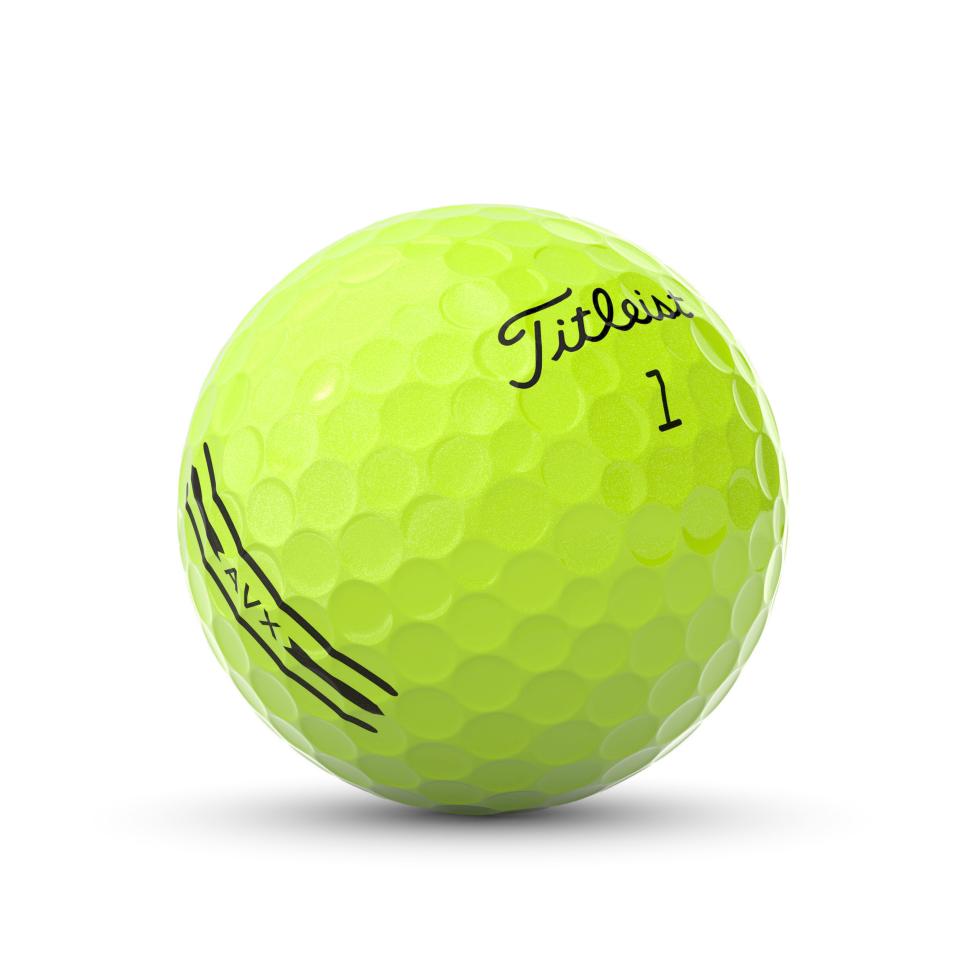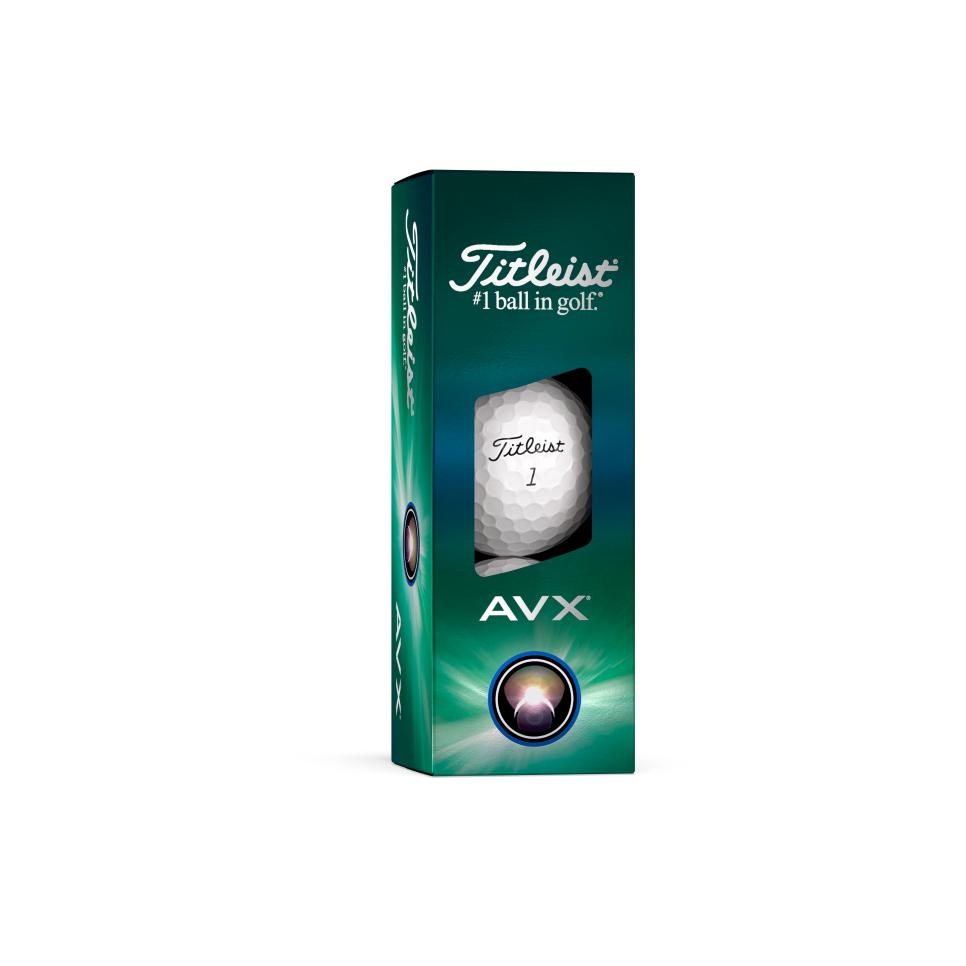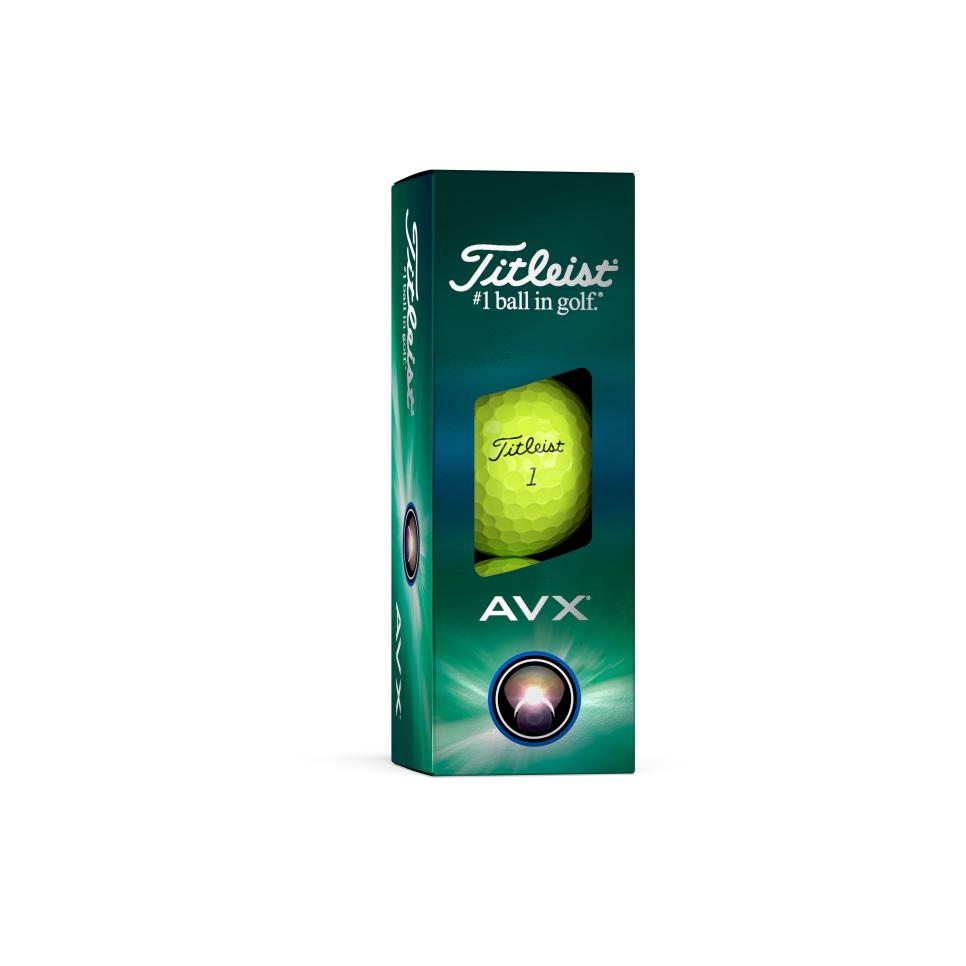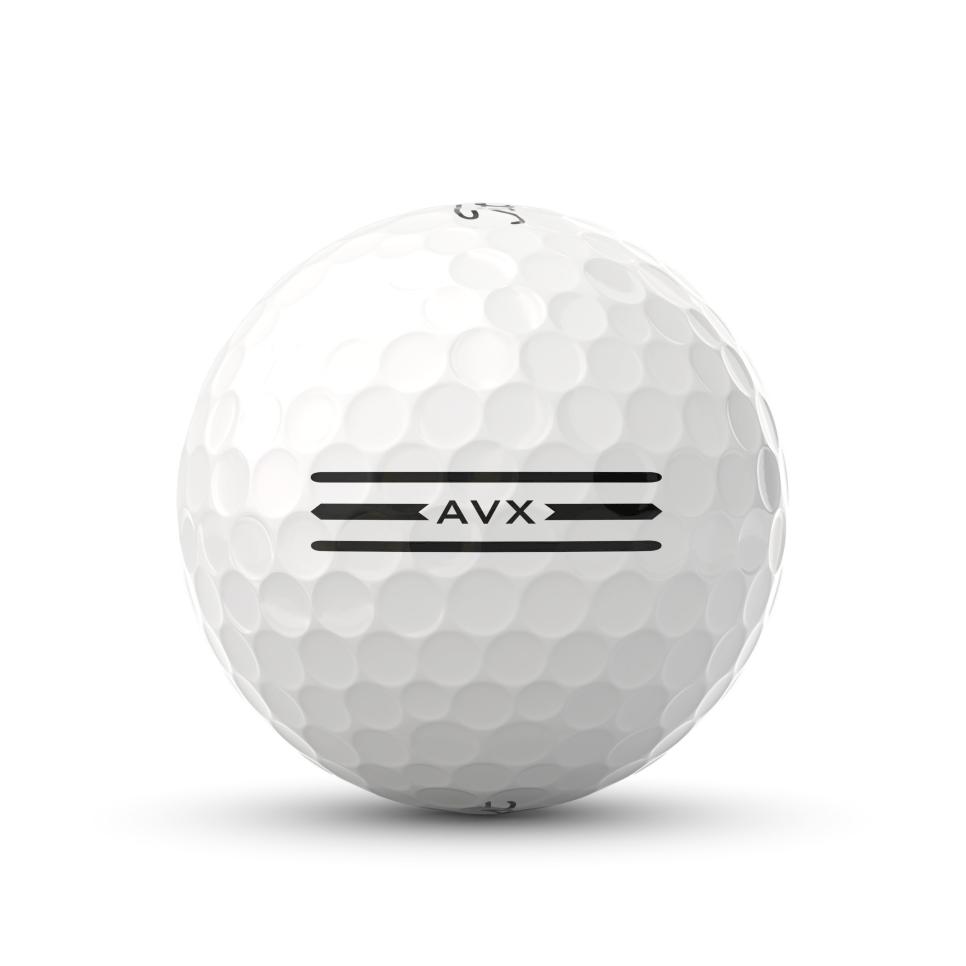WHAT YOU NEED TO KNOW: The new Titleist AVX, a three-piece multilayer urethane cover ball, continues to meet the specific demands of players looking for a softer-feeling, lower-flying and lower-spinning counterpart compared to the company’s flagship Pro V1. The latest upgrade to AVX aims to provide both a little more distance on mid-irons and a little more greenside spin than past AVX versions. The key changes involve more velocity from a high-gradient core combined with more short game spin from a thicker, softer cover.
PRICE: $69.95 per dozen ($NZ84.95). Available from February 3, in white and high-optic yellow.
 3 COOL THINGS
3 COOL THINGS
1. Faster on the inside. Since its introduction as a prototype in 2017, the AVX has lived in a niche role in the Titleist family, distinctly a distant third or even fourth in the company’s line-up of urethane-cover balls, of which the Pro V1/Pro V1x is franchise is the overwhelming leader. Even in the company’s high-level ball fittings, the number of times AVX gets the nod happens about half as often as the exclusive, relatively limited run – Pro V1x is the pick. But its place in the market, according to Golf Datatech numbers, does not waver much, and its demographic is meaningful with a market share all by itself that is often five or 10 times the size of some models played on the pro tours.
But satisfying that audience is a tough proposition, given it’s a player who is looking for things he or she can’t find in a Pro V1 like longer distance, particularly with the irons, while not sacrificing control and spin around the greens. On top of that, Titleist engineers know that making a better AVX isn’t simply turning up the volume, as it were, on the most played ball in golf.

“Once you put all the golfer needs first, you realise that the design space that you have to work within is very tight and you really have to go after materials hard to find the right things,” said Matt Hogge, Titleist’s director of product development in golf ball R&D. “And we made a ton of prototypes to get to this one.”

The first mission for these players is getting more speed for more distance. That meant going to the traditional engine of the golf ball, the core. Creating more speed in a core means pushing the gradient of stiffness within the core (the ratio of how firm the outer regions of the core are compared to the centre gets greater) so that the ball is more resilient.
A firmer mantle or “casing” layer also helped on the distance front by reducing spin to produce more effective launch conditions. It’s thinner on this year’s AVX but remains a high flex modulus (stiff) material that works with the core to produce more speed and less spin. “The casing layer is one of those things that came as a result of the generosity of COVID and the opportunity that came through the material shortages that plagued the golf industry for a period of time,” Hogge said. “That put us to work really hard in the back, and we found one that we like that worked really well in this instance.

“It really is just time and good experimentation. Do you always try to do it with the materials you have? Yes. But sometimes the materials you have aren’t enough and that’s where you come with these material additions.”
Of course, that thinner, firmer intermediate layer works the other way with the cover. It’s a spin reducer in how the ball is compressed to the core on full swings, but the mantle layer also lies at the foundation for creating spin on short shots with how it interacts with the urethane cover.

2. Softer on the outside. Because AVX players also are looking for the kind of greenside spin that improves short-game shots, essentially the kind of spin that only comes from a urethane cover, Hogge and team focused on that cover formulation. The new AVX uses a thicker cover to improve spin and enhance that softer feel that the ball has been the ball’s calling card since it was first introduced.
“It’s the softest urethane cover we have within our line-up,” Hogge said. “What that results in for the golfer is softer feel, better, feel and sound. What it delivers in performance is increased stopping power.

But knowing that speed is still paramount for AVX players, a thicker urethane cover could be a detriment as urethanes tend to be the slowest part of a golf ball. Not entirely so, Hogge said. “We’re able to get this speed because what we can put in the core and then using the high flex modulus formulation that we have, we’re able to get enough speed from those two layers and then this urethane is fast. Not all urethanes are equal in terms of what speed they can deliver. This one’s quick, relatively speaking, in the land of urethane covers.”
3. Calling your name. While AVX isn’t likely at any point to overtake Pro V1 in the marketplace, its appeal is consistent and well-defined. It knows its lane, Hogge said.
“You’re really helping a player who might have been used to hitting his 8-iron 150 [yards] and has seen that fall off recently,” he said. “If we can pull off 300 or so RPMs of spin out of some of these shots, you’re helping them hit it longer and straighter.”
In general terms, Hogge said, expect the AVX to fly lower, spin less and feel softer compared to the Pro V1. The AVX is the lowest-flying option in Titleist’s urethane line, and a new 346 quadrilateral dipyramid catenary dimple design optimises performance within that lower flight window.



